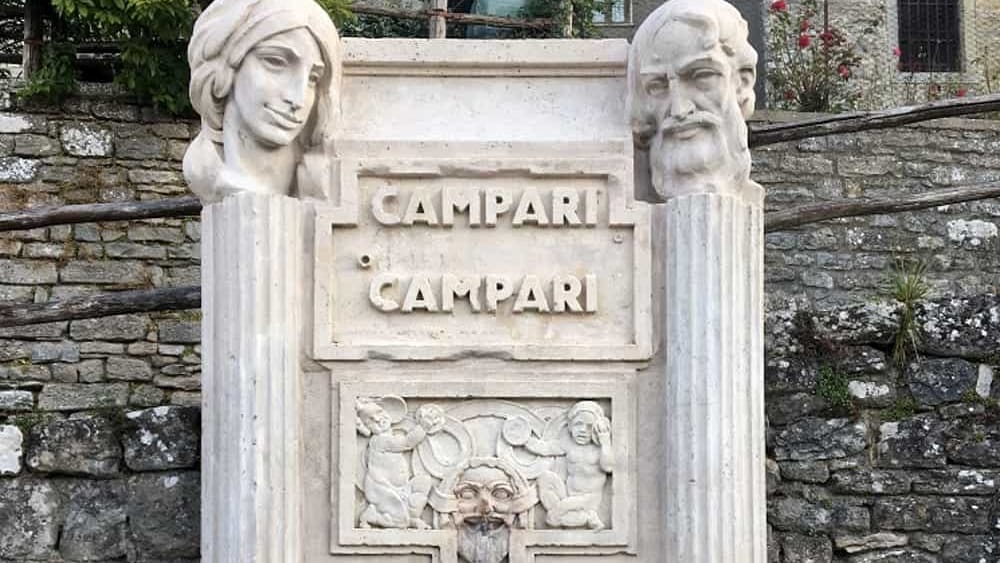Visit Brunate, a small awasome village over Lake Como
Brunate is a very fascinating village which overlooks the Town of Como from Mount Saint Maurice giving you the possibility to enjoy of some breathtaking views over Lake Como. In a clear day, besides the panorama over the first basin of the lake below you can see the whole western arch of the Alps with the imposing Massif of Mount Rosa, the Padana Plain and as far as the Apennine Mountains..
The history of Brunate
The nicknames given to the village of Brunate such as Mountain of the Saints or A balcony over the Alps tell us much of its history.
It began with the first settlements of the Celt-Ligurian, Insubres and Gaul tribes centuries before Christ who, on the plain of the Convalle below, built the first sedentary villages.
During the second half of the 12th century, Brunate constitute itself a s Free Commune, an independence that ceased in 1240, when the village was once more annexed to the town of Como.
Until the first decades of the 19th century, Brunate remained a small mountain village, detached and completely isolate from the below town of Como. It was only in the year 1817 when it was traced and built the muletrack, called Via delle Scalette (flight of steps path) to connect Brunate with Como and a 19th century’s writer reported: “a friend of mine took the trouble to count those steps, which are 1630, not one more, not one less”. Nowadays this step-path is partially lost although the fascination of this muletrack is still unchanged.
So, it was only in the second half of the 19th century, with the developing of tourisms on Lake Como, when it was also discovered the beauty of Brunate, a place that, because its climate and its geographical position is fit for a holiday season not too far from the northern town. This was why it was built a carriage road, although what really changed the destiny of the village was the building of the funicular, which was though and realized either to promote tourism or as a public means of transport for the local people.
Between the end of the 19th and the beginning of the 20th century the village underwent to a great expansion either for the building of Hotels or for a great number of residential villas mainly built in Art-Nouveau or Libetrty style.
The lighthouse Faro Voltiano
The building of the lighthouse, named after Alessandro Volta, the great scientist who invented the battery giving way to the production of electricity, thus changing the way of illuminating the world, was suggested as a everlasting token by Saint Don Luigi Guanella in 1899. The proposal was rejected by the then Bishop of Como who, instead, had a wooden lighthouse built in occasion of the Voltiadi games, which was promptly removed at the end of the games.
In 1927, to celebrate the centennial of the death of the great scientist, the Post and Telephonic Association had the lighthouse built. It is a building 99 m. high at 909 m. above water level, with intermittent red white and green lights which, besides being the colours of the Italian Flag, also represent faith, science and charity, and which can be seen at a distance of 40 km.
The lighthouse is an octagonal tower inside which there is a winding staircase of 140 steps which take to two balconies from where you can admire a breathtaking panorama. The lighthouse is open to the public from April to October every day except on Wednesdays and in case of bad weather.
.webp)
The Regia Road
It is a route of about 35 km. connecting Como.Brunate to Bellagio, passing through the many villages set on the eastern coast of the Larian Triangle. The very first definite map of the route dates 1721, as it is ensued in the Theresian Land Register, although it is presumable that the route ha very ancient pre-roman origins.
The route had been in use till the first decades of the 20th century, when it was built the Larian Road n. 585, which for some stretches overlaps the old muletrack. The route starts at Via Roma following the street signs to the Faro Voltiano. Obviously, this route can be stopped and done in many stages. The way back to Como can be done by public means from every village you decide to visit.
Church of S. Andrea
The church had been upgraded Parish in 1654. Between 1927 and 1932 the building had been restructured into the nowadays aspect.
Inside it is possible to admire some frescoes of the XVI century by the Como painters Gian Paolo, Raffaele and Carlo Recchi, together with a fresco depicting Saint Guglielma. Set into the walls are some memorial tablets to remember Blessed Magdalena, Saint Guglielma, Alessandro Volta and the brothers Pietro and Maurizio Monti. Of great importance is the organ, a work by the Masters Serassi-Prestinari.
The Campari fountain
You meet it at the lower exit of the funicular, just before Villa Giuliani. It was projected by the sculptor Giuseppe Gronghi and built in 1935, for advertising Davide Campari’s firm, the internationally known distillery which was started at the back room of the family bar in Milan, where Davide invented the first famous Cocktails Campari.
